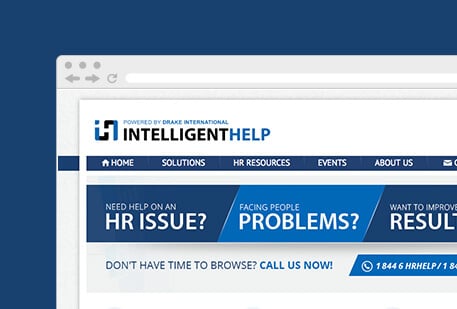Build an uplifting culture that serves, sizzles & succeeds
"Your company culture is like water: It can flow strongly and steadily, refreshing your team and carrying people forward; or it can sit stagnant, gradually poisoning those around it."
An organization is only as good as its people, but bright, talented people have many options, and good pay is no longer enough to hold the best. A strong organizational culture is the key to driving performance and positive behaviour.
Are good people clamouring to join your organization, or are resignations climbing? Do your people come in early and voluntarily stay late, or is absenteeism on the rise? Are your staff upbeat and enthusiastic, or do they gripe and moan?
Does your organization inspire loyalty, dedication, creativity, and motivation? Does your company culture challenge staff to learn, improve, and grow? As a good manager, you must ask yourself these questions. And you need to find positive answers. To grow, you must develop a company culture that attracts, inspires, and retains good staff. Take this seriously, or your organization could become a collecting point for old ideas and old thinking – dead wood.
Every organization has a distinctive culture. A good culture reinforces the behaviours and values you want, and weakens the attitudes and actions you don’t. A weak culture gives little guidance or direction, allowing all sorts of inappropriate actions and behaviours. You can make sure your company’s culture works overtime for you. Here’s how to build a stronger and more attractive culture inside your organization.
Vision, Mission, and Values
Are your vision, mission, and core values clearly written down? Have they been framed and hung on the wall? If so, great! But then what happened? All too often these important statements become part of the woodwork, ignored by old-timers and quickly forgotten by new hires. Don’t let this happen to you.
Integrate these key statements of purpose and philosophy into your recruitment and orientation programs, internal company communications, training and development schemes, methods of appraisal, recognition, and reward.
Ask yourself if every member of your staff can explain the company vision, mission, and values in their own words, and give practical illustrations in the course of their daily work? If so, you have harnessed the power of their alignment and understanding. If not, your team may be adrift without a clear course, or rowing hard but in divergent or conflicting directions.
New Staff Recruitment
Do you invest enough energy selecting staff that are really aligned with your vision and values? Do you give candidates enough time to get to know you and your organization before they sign on as members of the team? Do you screen prospective employees with the powerful profiling tools available in the market today? Or do you complain about a tight labour market and find yourself content with hiring enough warm bodies? If this last, you may not know the full cost, in money and morale, of the turnover that follows such hasty recruitment.
New Staff Orientation
Do you actively help new staff settle in and get comfortable for long and productive careers? Or do you push the human resources department to get new hires online and operational in the shortest possible time?
Employees who get thorough and thoughtful orientations will stay longer and contribute more throughout their careers. Are you investing enough time and energy to help your new staff start right?
Training and Development Programs
Investing in training and staff development programs is good. However, many companies engage a wide assortment of trainers and programs, making little effort to ensure a smooth and beneficial integration.
Here’s a simple test: Can each of your outside and in-house trainers clearly explain your organization’s vision, mission, and values? Can they describe the issues and major challenges facing your company? Are you convinced their training will help address issues, solve problems, and strengthen people’s careers? If not, why? You pay these professionals to help your people face the future. Shouldn’t they understand the future your people will be facing?
Annual Appraisals
If you want a service-driven organization, is quality service in your appraisal? If you want a creative mindset, are you assessing staff on the range, depth, and volume of their ideas? If you want an open corporate culture, are your appraisals done in an open format? If you want cross-functional and non-hierarchical communication, do you employ a 360-degree appraisal process? No amount of broadcasting company values will matter if people are measured by other standards.
Take a look at your current appraisal system. Is it up to date? Does it reward, recognize, and reinforce what you want your company to be?
Rewards and Recognition Programs
The old adage is true: What gets rewarded gets done. But not all rewards are monetary. They may be public, private, formal, informal, planned, unexpected, elegant, simple, or unique.
The most motivating rewards may be public celebrations of the people and actions that exemplify your organization’s highest values. At Singapore Airlines, the Managing Director’s Award is the most prestigious tribute an employee can receive. The award is given each year to those staff members whose actions demonstrate the airlines’ commitment to total quality service. Winners are celebrated, photographed, interviewed, published, wined, dined, and praised; yet they receive no special monetary award. These people become the legends, heroes, and role models of the organization. Their deeds are told and retold for years to come. Their actions – and the public recognition they receive – keep the airlines’ values flying high.
How inspiring are your practices of rewards and recognition? How frequently and consistently are they applied? People thrive on appreciation, recognition, and reward. Does your company culture provide enough?
Company Social Events
Too many social gatherings are expensive undertakings that provide an outlet for stress but do little to enhance communication or commitment to the business. They don’t have to be this way. Memorable social events can deliver enjoyment for the staff and build enthusiasm for your company’s goals, achievements, and values.
Put a cross-functional team in charge of designing and delivering your next social event. Give them time and a budget. Provide them with professional and management support. Set parameters and guidelines for linkage to the business and the organization. Then monitor their progress, but let the show be their own.
Lavish praise for an event well done and you will build a tradition of interaction that deepens and strengthens as it grows.
Staff Suggestion Schemes
Managers want feedback and suggestions for improvement from staff. But how many companies can point with pride to widely respected and frequently used suggestion schemes?
Making your program more than just a box on the wall requires rapid response, immediate implementation of good ideas, and generous recognition for contributions.
Try this: Give away a dinner for two every month for the best new suggestion. Even if the first month has only a meager selection of ideas, pick one and give the prize away. Once people realize there is a prize given out every month, you’ll find the suggestion box brimming with input by the month’s end.
Management and Staff Interaction
Management and staff work better together if they have abundant opportunities to interact. Schedule frequent team meetings. Provide opportunities for staff to speak up without fear of reprisal or retribution. Create panel discussions where all sides can ask questions and receive candid – not defensive – replies. Host social functions and team games. Organize a nature walk or an overnight retreat. More is truly merrier when mingling the members of your team.
Rites and Rituals
Companies with strong cultures evolve rites or rituals that are memorable and unique. At one multinational, significant sales are honoured by the key salesperson ringing a huge Chinese gong at the beginning of the monthly sales meeting. The message rings loud and clear: Successful sales are good reason for public celebrations.
An American R&D laboratory fires a loud outdoor cannon each time one of the research teams concedes a major or costly mistake. People worry when the cannon is quiet for too long. The cultural message is understood: Invention requires making mistakes. We are here to take those risks. At the Service Quality Training Centre, new trainers are thrown fully clothed into the water at their first company retreat. The message: We’re all in this together. Welcome.
Internal Communications
How does word get around from your head office? Do your email messages and newsletters focus on current customers, real issues, and difficult but significant achievements, or are they seen as sanitized propaganda from head office?
External Communications
How you communicate with the outside world reflects back upon your internal staff. Do your employees take pride in the advertising and public relations your company sponsors? Is your corporate image fresh or outdated? Is your organization seen as a public-spirited contributor to the community, or just another money-making enterprise?
Management Role Modelling
The most powerful action to build company culture is for the members of management to lead by example.
A senior Japanese executive was visiting one of his company’s overseas manufacturing plants. As he walked along the carefully prepared factory floor, he saw a small scrap of paper below one of the machines. To his subordinates’ shock and amazement, he detoured from the route and stooped to pick up the paper. Quietly placing it in his pocket, he returned to the designated path.
That one gesture did more to reinforce the company’s commitment to housekeeping than countless booklets and banners. The challenge for all of us is clear: We must walk the talk.
Make Your Culture Nourishing
Your company culture is like water: It can flow strongly and steadily, refreshing your team and carrying people forward; or it can sit stagnant, gradually poisoning those around it. It can irrigate growth and stimulate new ideas; or it can crash down on any signs of change.
Resignations, absenteeism, and destructive gossip are bad news. But they are only symptoms. The source is weak morale, low motivation, and a suffering company culture.
Your prescription for better health? Take action now. Build your organization to nourish people, stimulate ideas, and motivate everyone to give their very best.
Copyright Ron Kaufman. Reprinted with permission. Ron Kaufman is the author and founder of UP! Your Service. He is the world’s leading educator and motivator for uplifting customer service and building service cultures. Learn more at www.UpYourService.com and www.RonKaufman.com. Drake Business Review | Volume 3, Number 2 | drakeintl.com
 CA-EN
CA-EN UK
UK AU
AU US
US NZ
NZ PH
PH ZA
ZA SG
SG HK
HK


